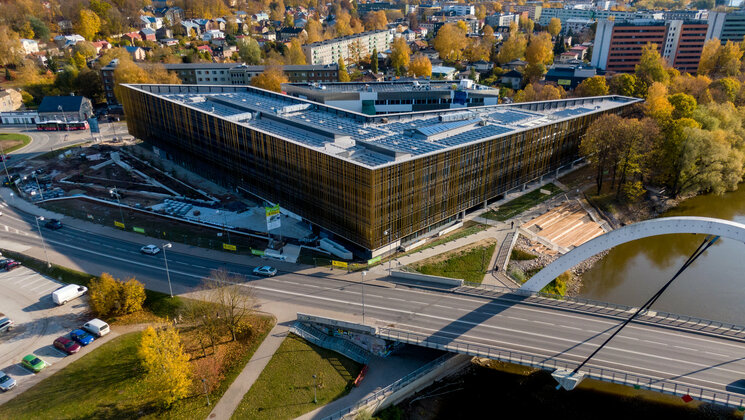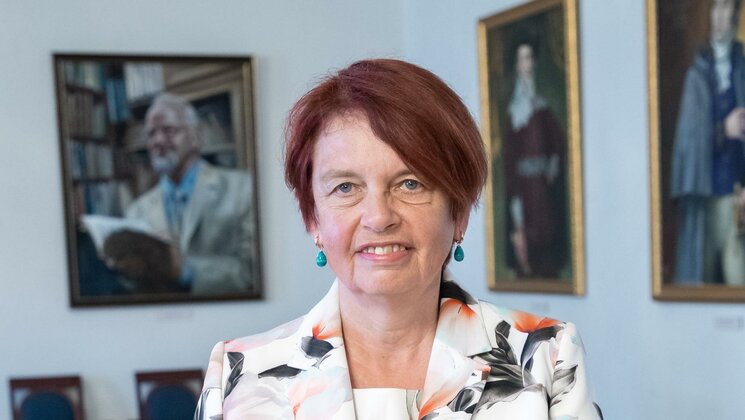Space mission with Estonian participation to study a 1000 planets adopted by ESA
European Space Agency (ESA) has adopted the Ariel space mission, which includes Tartu Observatory's Stellar Physics Group as part of the science team. The mission will be the first to research a thousand exoplanets, trying to understand their formation and chances of hosting life.
The Earth orbits it star, the Sun. Planets that orbit any other stars are called exoplanets. In the last 25 years, thousands of exoplanets of different sizes and orbits have been discovered. However, we still don't know what the geology of the planets is like, what their atmospheres consist of, what connects them to their host star or if any of them have the conditions for life.
Ariel will be the first mission in history to start looking for an answer to these questions. "Ariel will be by far the most ambitious atmosphere study ever made," said Heleri Ramler, Research Fellow in Stellar Physics at Tartu Observatory. The mission will look at the chemical composition of about 1000 exoplanets.
Ariel could help determine the probability of life on the planets
The main instrument of the Ariel mission is a space telescope of the same name that will be launched to space in 2029. The telescope will use the so-called transit method. When a planet transits its host star (by looking from our Solar System), light from the star passes through the planet's atmosphere. The spectrometer of the telescope can then be used to investigate the light from the host star.
This way, the elements present in the atmosphere of the planet can be detected – for example water vapour, carbon dioxide and methane, which could also indicate connection to life. In addition, the transit method reveals if clouds or smog are present in the atmosphere, as well as offers information about the temperature distribution of the atmosphere.
By gaining information about the composition of the planets, researchers hope to find patterns about how a host star of a certain type can affect the composition of its planet companion. This can lead to knowledge about how planets and planetary systems – including the Earth and our Solar System – form and evolve.
Estonians will help ensure a successful mission
By participating in Ariel, Estonia will contribute to understanding the place of our solar system, planet Earth, and biosphere in the Universe. Tartu Observatory's researchers will be doing the the necessary prestudies to guarantee the success of the mission. They will observe the host stars of exoplanets, which need to be known well in order to Ariel's measurements to be accurate. Researching the composition of the host stars is vital to scientifically interpret the results of Ariel.
"Besides that, our observations in Tõravere will help to determine the best moments for Ariel’s measurements to minimise the costly lost time on the space telescope," said Tõnis Eenmäe, Research Fellow in Stellar Physics at Tartu Observatory.
The first generation to be able to research exoplanets
Over the past five years, more than 50 institutes from 17 countries have been working to develop the science goals and design the instrumentation of the Ariel mission. The mission has passed a rigorous set of reviews, and as a result, ESA has now confirmed that the team can work towards a launch in 2029. This means that now the team can move on to building prototypes.
“We are the first generation capable of studying planets around other stars. Ariel will seize this unique opportunity and reveal the nature and history of hundreds of diverse worlds in our galaxy," stated Professor Giovanna Tinetti, Principal Investigator for Ariel from University College London. "We can now embark on the next stage of our work to make this mission a reality."
The Ariel telescope will be launched at the same time as another space instrument that Estonians are working on – the Comet Interceptor. The goal of the latter is to study a comet from the Öpik–Oort cloud which surrounds the Sun.
See the video by our Stellar Physics Group for more information! The video can be watched with English subtitles.
More information:






